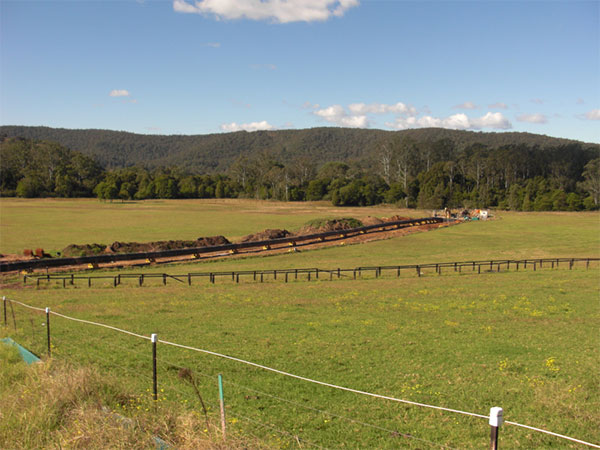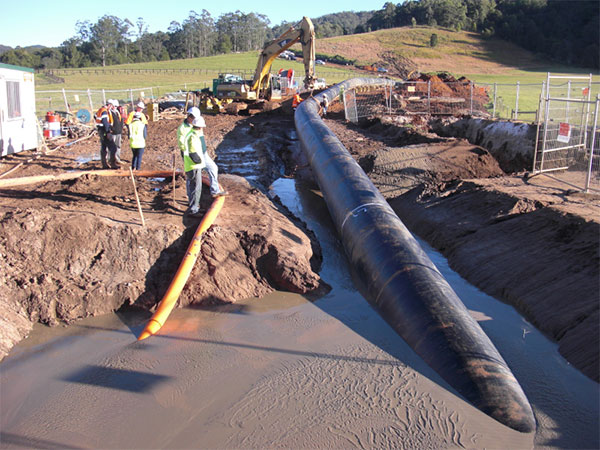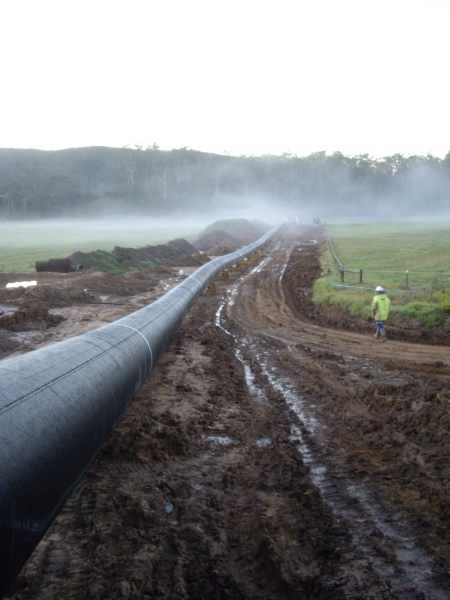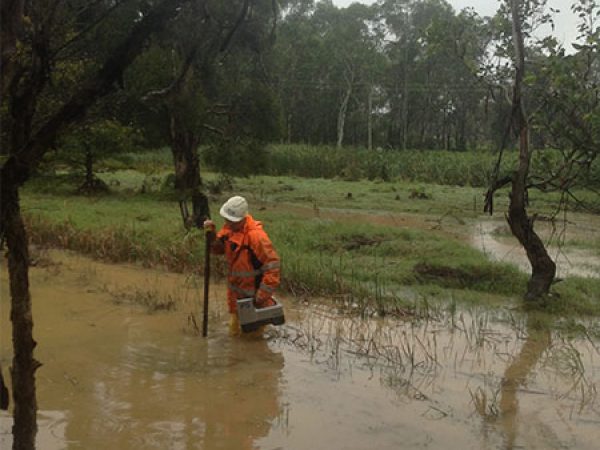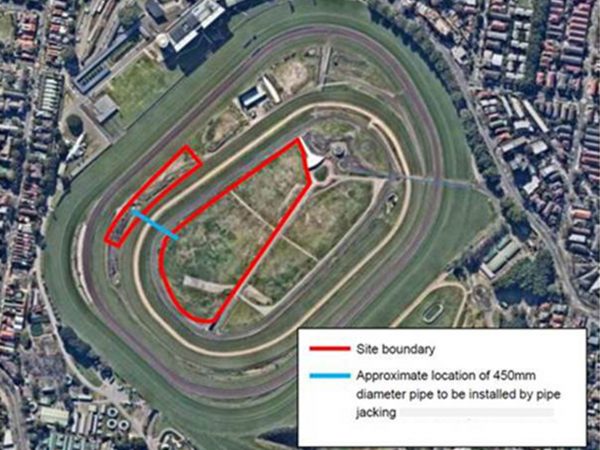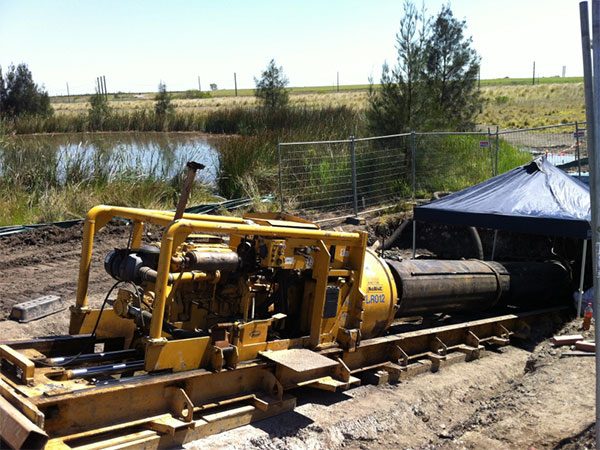SCOPE OF WORKS
UEA was contracted to deliver a 284 metre HDD crossing in particularly difficult ground conditions as a part of the Mardi to Mangrove Link Project. Ground conditions were so difficult that conventional tunneling was deemed as being impossible and HDD was the only option to successfully install the critical link. Most importantly though was the requirement to avoid disruption to the local platypus community that resided along this stretch of the Wyong River.
DESIGN
The Wyong creek crossing at Yarramalong was originally planned as a microtunnelling project, however ground conditions, cost and the depth of the required shafts (10m+) led John Holland to look for alternatives. Due to the Federally Protected Riparian Zone and platypus habitats, a pipe bridge was not possible in this location. HDD was not initially considered as a 1200mm SDR 11 PE water main was not available in Australia and had not previously been installed via HDD. UEA sourced a pipe manufactured in Austria and calculated that its 300,000 pound HDD rig could install this pipe in the prevailing ground conditions. A 60” (1524mm) diameter hole was required for installing the pipe, which was at the limits of the HDD rig.
CHALLENGES
Apart from the difficult ground conditions (alluvial clay, sand, gravel and sandstone), further challenges were encountered due to difficult access and several flood events during the project. With a narrow 10 metre wide construction corridor over 1.2 kilometres providing access to the exit point, a pair of 180mm pipelines were used to return drill fluid from the exit to the entry site. A Morooka tracked transporter, 4×4 Barford site dumpers and 6×6 Moxy dumpers were used for accessing the site, as well as excavators in the 20-40t operating weight class due to poor access and site restrictions.
The 1200mm SDR11 PN16 HDPE pipe was shipped to Australia in 11.8 metre lengths, packed in 8x40ft containers. The containers were decanted in Sydney, transported to site by semi-trailer and stockpiled there for later welding. KenKar was responsible for the butt fusion welding of the pipe, as well as the supply and fitting of steel test plates (81mm thick) to the end of the pipe string for pre-installation hydrostatic pressure testing. Once welding was complete, the pipe string was pressure tested to 1600kPa to prove the integrity of the welding process. The pipe string was pressure tested again after installation into the HDD bore. The butt fusion welding was carried out in accordance with European Standards (DVS) as per the recommendations of the pipe manufacturer, as the local welding standard did not cover pipes of this wall thickness.
Directional drilling works commenced from the high side of the bore as this area had the best access and allowed pipe to be strung out on the exit side during reaming operations. Reaming of the borehole was planned to step up in increments suited to the HDD rig and the prevailing geology with a final cut of 60” planned. At completion of the pilot bore a forward reaming pass was completed to allow the drill pipe to be pushed out for use as a tail string followed by back reaming stages. UEA experienced difficulty half way through the 54” pass after encountering significant groundwater infiltration, gravel and cobble ground conditions. A second drill rig was utilised to seesaw the drill string to successfully complete the remaining reaming and swabbing passes prior to pipe pull. Upon successful conditioning of the borehole the drill string and pulling assembly was attached to the pipe ready for pullback. In order to meet the client’s exacting requirements, the pipe was filled with water during pullback from the already installed and tested main, enabling accurate buoyancy control with fresh water.
UEA worked closely with drilling fluid supplier in choosing and monitoring the bentonite-based fluids used for the bore. A centrifuge of a size normally used in downhole oil well drilling was utilised to extract the bore cuttings, allowing 100% of recovered material to be beneficially re-used on site rather than being transported from site for disposal. Given the difficult access, this provided a significant environmental and cost benefit.
Highside Drilling Services supplied both bore tracking services and assisted in calculations for the bore. Wire line steering tool technology was used to ensure that the bend radius for the pipe remained within manufacturer tolerances and that the pipe was installed within the narrow pipeline easement.
COMPLETION
Despite the many challenges, UEA completed the bore successfully. The milestone in installing 1200mm SDR11 PN16 HDPE pipe via HDD led to enquiries from other water authorities, and spurred alternative thinking in the industry about what can be achieved with HDD methods – this provides significant environmental benefits from reduced ground disturbance over traditional open cut methods.

